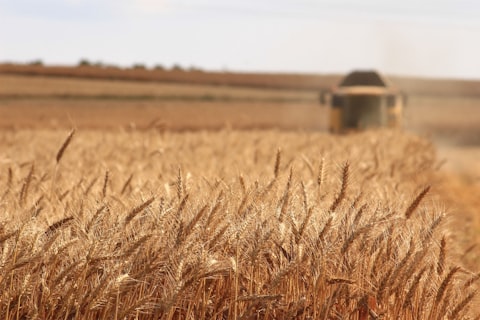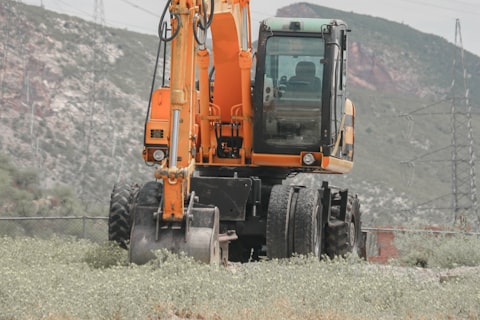The Stone Age of Man
Keywords
Stone Age Paleolithic Mesolithic Neolithic archaeology human history agricultural revolution
Introduction
The Stone Age marks a defining period in human development, characterized by stone tool use and spanning the Paleolithic, Mesolithic, and Neolithic eras.
Paleolithic Era
The Old Stone Age, where early humans were hunter-gatherers and tool-making evolved from simple to sophisticated.
Mesolithic Era
A transitional time with improved stone tools, fishing techniques, and the beginnings of domestication.
Neolithic Era
The dawn of agriculture, permanent settlements, and early civilizations, revolutionizing human society.
Impact of the Stone Age
The era's influence on society's evolution, cultural developments, and its legacy in modern times.
Archaeological Discoveries
Discoveries from Lascaux, Çatalhöyük, and Skara Brae provide insights into Stone Age life.
Challenges and Controversies
Debates in archaeology over Stone Age classifications and interpretations of evidence.
Conclusion
Reflecting on the Stone Age's significance in shaping our history and the importance of studying our ancient past.
Figures
Stone Age Timeline:
Images


[unsplash_utm_url]=https://unsplash.com/?utm_source=PopAi&utm_medium=referral
I. Introduction
- The Stone Age: A prehistoric period with stone tool use.
- Divided into Paleolithic, Mesolithic, and Neolithic eras.
II. Paleolithic Era
-
Known as the Old Stone Age.
-
Spanned from the first stone tools to the end of the last Ice Age.
-
Evolution of tool-making from simple to complex.
III. Mesolithic Era
-
The Middle Stone Age, a bridge between Paleolithic and Neolithic.
-
New technologies and cultural practices emerged.
-
Advancements in tool design and domestication.
IV. Neolithic Era
-
The New Stone Age brought agriculture and settlements.
-
The agricultural revolution led to societal transformations.
-
Innovations in pottery, weaving, and farming.
V. Impact of the Stone Age
-
Laid the groundwork for social structures and technology.
-
The shift to agriculture was a turning point in history.
-
Stone Age legacies persist in modern practices.
VI. Archaeological Discoveries
- Sites like Lascaux and Çatalhöyük offer historical insights.
- Artifacts and remains help reconstruct the Stone Age narrative.
VII. Challenges and Controversies
- Ongoing debates over Stone Age periodization.
- Interpretations of evidence remain contentious.
VIII. Conclusion
- The Stone Age's role in human development is undeniable.
- Understanding our ancient past is crucial for the present and future.
. Introduction
- Definition of the Stone Age
- Overview of the different periods within the Stone Age
II. Paleolithic Era
-
Characteristics of the Paleolithic era
-
Tools and technology used by early humans
-
Hunting and gathering lifestyle
III. Mesolithic Era
- Transition from the Paleolithic to the Mesolithic era
- Changes in technology and lifestyle
IV. Neolithic Era
-
Agricultural revolution
-
Settlements and the development of early civilizations
-
Advances in pottery, weaving, and agriculture
V. Impact of the Stone Age
-
Evolution of human societies
-
Cultural developments
-
Legacy of the Stone Age in modern times
VI. Archaeological Discoveries
- Key archaeological sites and findings from the Stone Age
- Insights gained from studying artifacts and remains
VII. Challenges and Controversies
- Debates surrounding the classification of the Stone Age
- Interpretations of archaeological evidence
VIII. Conclusion
- Reflection on the significance of the Stone Age in shaping human history
- Importance of studying our ancient past
The Stone Age of Man
The Stone Age represents a crucial period in human history marked by significant advancements in tool-making, social organization, and cultural development. In this essay, we will delve into the Paleolithic, Mesolithic, and Neolithic eras of the Stone Age, exploring the technological innovations, societal changes, and lasting impact of this transformative period.
Introduction
The Stone Age is a prehistoric period characterized by the use of stone tools and weapons. It is divided into three main periods: the Paleolithic, Mesolithic, and Neolithic eras, each representing distinct stages of human development and adaptation.
Paleolithic Era
The Paleolithic era, also known as the Old Stone Age, spans from the earliest known use of stone tools by hominins to the end of the last Ice Age. During this period, early humans lived as hunter-gatherers, relying on stone tools for hunting, food preparation, and other essential tasks. The Paleolithic era saw the gradual refinement of tool-making techniques, leading to the creation of more sophisticated implements such as hand axes and spear points.
Mesolithic Era
The Mesolithic era, or Middle Stone Age, represents a transitional period between the Paleolithic and Neolithic eras. It is characterized by the continued use of stone tools alongside the emergence of new technologies and cultural practices. The Mesolithic saw advancements in tool design, the development of fishing techniques, and the domestication of certain plants and animals.
Neolithic Era
The Neolithic era, or New Stone Age, marked a significant shift in human society with the advent of agriculture and settled communities. The Neolithic revolution, also known as the agricultural revolution, transformed human lifestyles by enabling the cultivation of crops and the domestication of animals. This shift towards agriculture led to the establishment of permanent settlements, the development of pottery and weaving techniques, and the rise of early civilizations.
Impact of the Stone Age
The Stone Age had a profound impact on the evolution of human societies, laying the foundation for complex social structures, cultural practices, and technological innovations. The transition from hunting and gathering to agriculture marked a pivotal moment in human history, enabling population growth, the specialization of labor, and the development of trade networks. The legacy of the Stone Age can be seen in modern agricultural practices, technological advancements, and cultural traditions that trace their roots back to this formative period.
Archaeological Discoveries
Archaeological research has unearthed a wealth of information about the Stone Age, providing insights into the daily lives, beliefs, and achievements of our ancient ancestors. Excavations at key sites such as Lascaux in France, Çatalhöyük in Turkey, and Skara Brae in Scotland have revealed intricate cave paintings, well-preserved settlements, and artifacts that offer glimpses into the past. By studying these archaeological remains, researchers have been able to piece together the story of human development during the Stone Age and gain a deeper understanding of our shared history.
Challenges and Controversies
The classification of the Stone Age and the interpretation of archaeological evidence have been subject to debate and scrutiny within the field of archaeology. Scholars continue to grapple with questions surrounding the timing of key developments, the spread of agricultural practices, and the social dynamics of early human societies. Controversies over dating methods, site interpretations, and cultural attributions highlight the complexities of studying prehistoric periods and the challenges of reconstructing the past based on fragmentary evidence.
Conclusion
The Stone Age stands as a testament to the ingenuity, resilience, and adaptability of early humans as they navigated changing environments and evolving social landscapes. By exploring the Paleolithic, Mesolithic, and Neolithic eras, we gain a deeper appreciation for the innovations and achievements of our ancient ancestors and the enduring legacy of the Stone Age in shaping human history. Studying the Stone Age not only illuminates our past but also offers valuable insights into the challenges and opportunities that have shaped our present and will influence our future.


